Hands On With the Samsung Galaxy Note 5 and Samsung Galaxy S6 edge+
by Joshua Ho on August 13, 2015 11:00 AM EST- Posted in
- Smartphones
- Samsung
- Galaxy
- Mobile
- Galaxy Note 5
Software
Continuing along the software train of thought, TouchWiz on the edge variant sees new edge features, namely the ability to adjust the position of the edge drawer swipe, the ability to use the edge drawer in applications, and the addition of an app drawer to the edge drawer. I’m not really sure if these features are enough to move the edge display from a mostly cosmetic change to a functional one, but the edge app drawer presents at least the possibility of additional functionality.
On both devices, I also noticed that the iconography has changed from the Galaxy S6. The change isn’t really radical here, but it is enough to be noticeable in comparison to previous iterations. The software remains relatively similar to the Galaxy S6 in UI performance, which probably isn’t a surprise given the shared SoC, display resolution, and UI/frameworks.
SideSync has also been updated significantly for the Note 5 and the edge variant, with the ability to automatically reconnect on a shared network instead of manually connecting to the phone with the SideSync client after every disconnect, drag and drop wireless file transfer, and phone call/text messaging over the SideSync client. As far as I can tell, these could be worthwhile features but without testing it’s hard to say if it will make a big difference in user experience.
Another interesting software feature that Samsung demonstrated for audio was UHQA, or Ultra High Quality Audio. I normally don't bother to talk about these features because it's pretty easy for them to end up as gimmicks, but this feature is effectively designed to try and reduce the effects of lossy compression when high frequencies have been cut off. As seen in the photo above, when UHQA was off the sample music topped out at around 8-10 KHz, while with UHQA on we see harmonics extending up to 20 KHz. Subjectively, it did seem that this interpolated version was much closer to a lossless music file, but my ears aren't particularly astute in that regard.
Both devices will also support live YouTube broadcasting as a camera mode, which seems potentially useful, especially with 1080p60 broadcasting quality but for some reason the units that I saw were limited to 240p, which may be due to the nonfinal state of the software.
Samsung Pay
With the Galaxy S6, I mentioned that there were magnetic secure transmission (MST) capabilities which would allow for the phone to allow for contactless payment even on legacy payment terminals that only allow magstripe cards, but I didn’t feel that it was worth mentioning as a real reason to get the phone as Samsung Pay was announced with the Galaxy S6 but without any demonstration or support soon after launch. With the Galaxy Note 5 and the edge variant, this changes. Samsung is hoping to begin user trials of Samsung Pay with NFC and MST contactless payment in the US this month, with a US launch in September. According to Samsung, feedback from user trials in South Korea was overwhelmingly positive, with only a small number of legacy terminals that needed software updates to support MST transactions.
From the demo that I saw, Samsung Pay is actually quite promising as it didn’t seem particularly sensitive to orientation as long as the back of the phone was reasonably close to the magstripe reader on the terminal. Activation is relatively simple, and is accomplished by simply swiping on the display when the screen is off and tapping the card you want to use, then authenticating with Pin or fingerprint. This isn’t as fast or simple as some competing solutions, but given the constraints of MST it makes sense. It’s worth noting though that in October magstripe cards will see a liability shift that is likely to drive NFC/EMV adoption much more strongly in the US, although Samsung predicts that the shift will still take a year or two in which MST will still have significant utility. It’s also worth noting that any device with a tripped Knox flag will be unable to use Samsung Pay.
Accessories
A number of accessories were also on display which were at least somewhat interesting. In addition to fast wired charging, Samsung seems to have developed a fast wireless charger, although it isn’t clear what the power output is compared to the previous standard wireless charger.
There were also external batteries with fast charging at what appears to be 9V and 1.67A, so this is probably supports QC 2.0.
There were various cases on display, but the only one worth really focusing on as far as I can tell is the keyboard case for the edge variant, which effectively makes it possible to turn the phone into a sort of throwback to Palm Treos, as the color and general design of the case really does give it a retro feel. Outside of design, typing with it was a fun experience but I didn’t really feel any faster than I did with an on-screen keyboard. I suspect that this will have a significant niche audience for those that are still clinging to phones like the Droid 4, but mainstream appeal would be relatively limited for this kind of accessory.
Wrapping things up, the Galaxy Note 5 and Galaxy S6 edge+ will be available in the US on AT&T, Verizon, Sprint, T-Mobile, and US Cellular. The Note 5 will be available in Black Sapphire and White Pearl, and the Galaxy S6 edge+ will be available in Black Sapphire and Gold Platinum.
Consumers will also be able to start trying out the Galaxy Note 5 and S6 edge+ on August 14th in various carrier outlets and electronics retailers, with preorders starting today at 3PM EST, with availability starting on August 21st. On Sprint, the Galaxy Note 5 will start at 249.99 USD on contract, and the Galaxy S6 edge+ will start at 349.99 USD on contract. On T-Mobile, the Note 5 will start at 25 USD/month through September 30, and the Galaxy S6 edge+ will start at 28.5 USD/month.


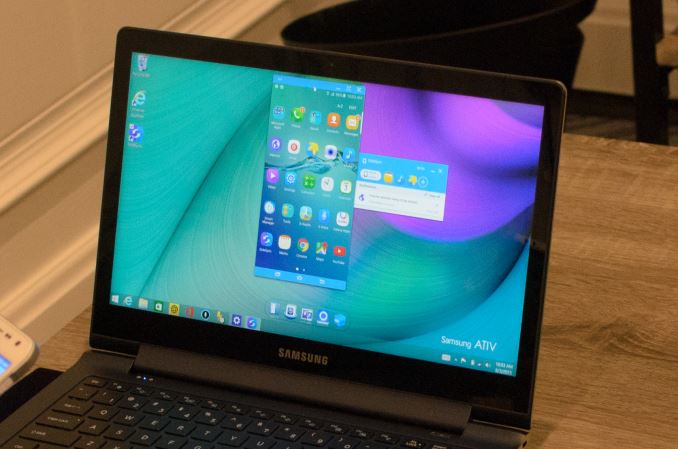
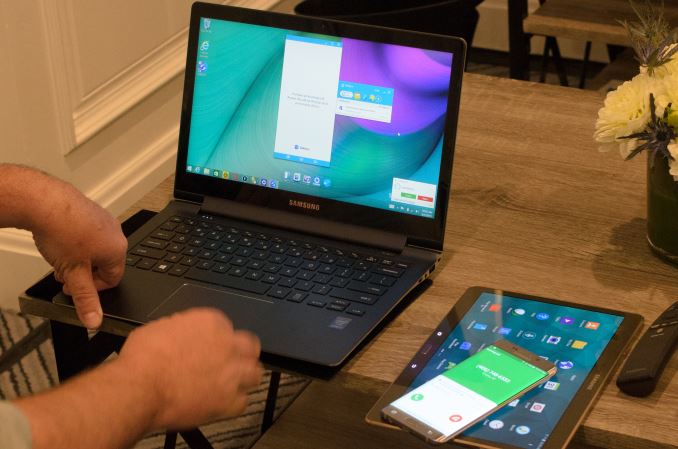
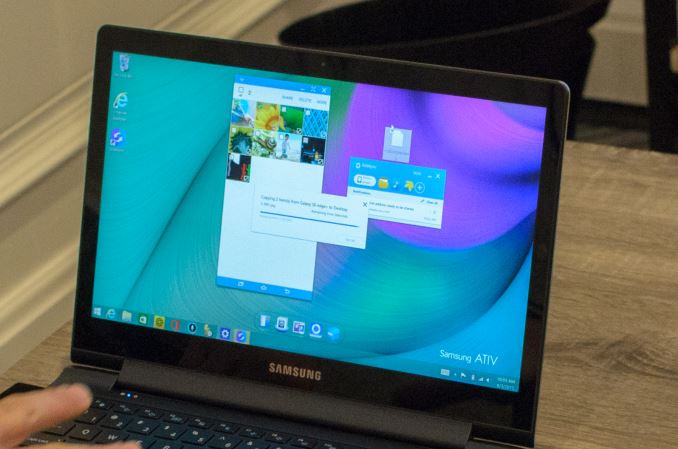
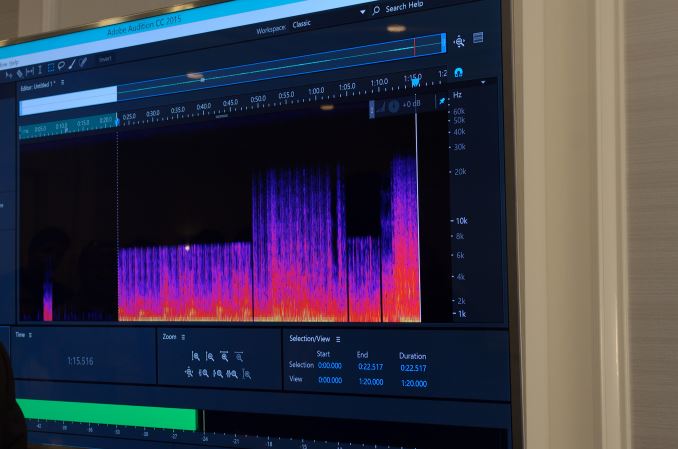



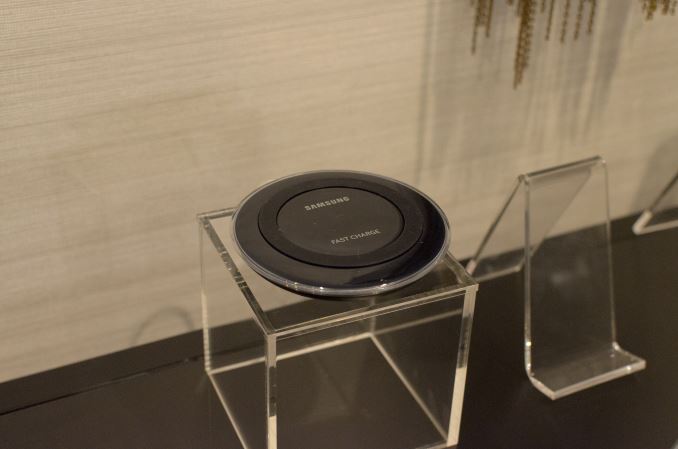
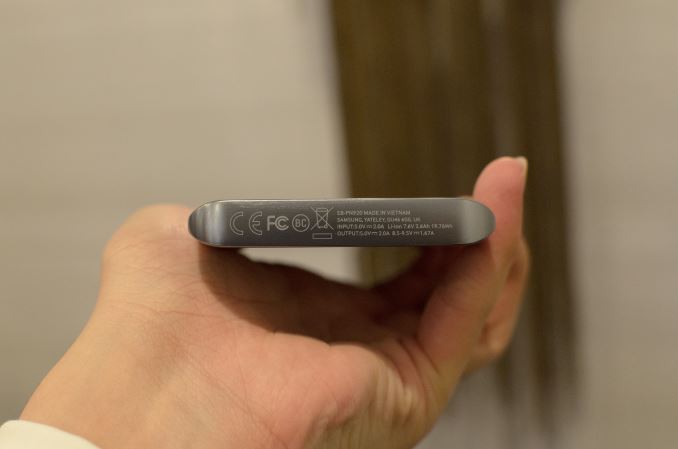
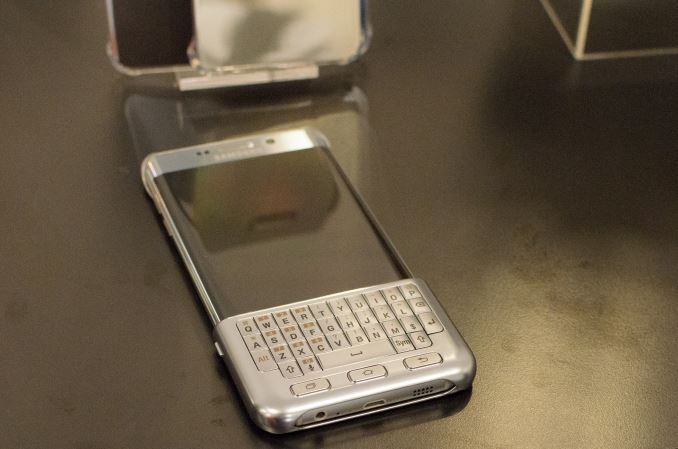









218 Comments
View All Comments
FozzyofAus - Thursday, August 13, 2015 - link
arrogance in pronouncing extra storage unnecessary is amusing.I bought my first 120MB HDD in the early 90's for my Amiga 500 that i used for many years. I originally switched from the iPhone4 to the Note2 due to the larger screen, LTE support and microSD. I was planning to upgrade to the Note 3 last December as it was cheap until I tried the Gear VR headset. I bought the Note4 instead specifically for that and the resolution of the panel is only just adequate for that.
I currently have around 40GB of demos and short surround videos on my 128GB microSD card. Wait until the full games start rolling and surround videos become more mainstream on Samsung's MilkVR and Google's YouTube. Your declaration will seem as silly as the historical assumption that 640KB of RAM will be enough for anyone.
All the above is academic though as Samsung is in the business of selling these devices so what people think they "WANT" is much more important than what they actually end up using. I liked the fact the Note2 had a removable battery and I used that feature "advantage" to help convince myself to switch from iOS (which i preferred) to Android. I didn't end up using the extra battery I bought much. An external battery pack that can charge multiple devices proved more practical.
On the Note4 though using VR drains the battery REALLY fast. It won't last 4 hours so now that i know the Note5 doesn't have any of my feature wish list: UHD panel, much larger battery, or more storage capacity (I currently have 32GB + 128GB), a second battery for my note4 is my next purchase instead of my expected note5 Christmas present to myself. So for Samsung a $50 sale instead of $1000. Any customer thinking similarly to me will affect their bottom line.
JeffFlanagan - Thursday, August 13, 2015 - link
I'd expect Gear VR for the Note 5 to have USB passthrough like the S6 version, so you can work around the battery issue. Lack of SD is unfortunate. VR software and videos fill up memory quickly.Xipher_NCSU - Thursday, August 13, 2015 - link
This guy nails it, and the rest of you must have MicroSD and Removable Battery Nazis are the niche market. You need to be comfortable with that.There are numerous ways to recharge your phone these days, join the rest of us. The MicroSD must have is also a very small user base... period.
vision33r - Thursday, August 13, 2015 - link
From what I can tell you are in IT but too specialized to be in management. Because you seem to have a particular focus and a very closed minded view of tech.I am an IT Security Consultant and I have a Note 4 with a 128GB microSD. I do have tons of FLAC but the biggest storage use for me is backing up my ROMs and settings. I am very meticulous about certain settings of my custom rom and apps. I backup my favorite versions of a particular app so whenever a developer changes the code for the worst. I have a backup that I can restore to and not lose functionality.
MicroSD has served me well as well as swappable batteries. As a traveling consultant I get to go out a lot and not everywhere you can find an outlet and charge. So having portable chargers and batteries is a must for me.
NetMage - Sunday, August 16, 2015 - link
And of the millions of people Samsung would like to sell phones to, how many do you think have the need to store ROM backups? I would bet all custom ROM users added together aren't enough of a market for Samsung to notice.Xenonite - Thursday, August 13, 2015 - link
Since I have had the great misfortune of being born into a country with basically NO internet (An 'uncapped' 1mbit/s connection (average download speeds about 80~95KB/s) over here has a total cost of around $20 a month and a throttling 'cap' of around 10GB).We don't use the 'cloud', because it would take an eternity to download a single 15MB (between 2x and 8x that for high bit depth and high sample rate tracks) FLAC song (if the downloads could even be completed in a month) downloading around 70 of those files would place most users into the 1-5kB/s 'throttled' zone for the rest of the month.
Also, I find it extremely convenient to always have an effective 64GB "flash drive" on hand to transfer files betwewn PCs
tenoutoften - Friday, August 14, 2015 - link
Good argument for, completely see the need for it in this instance, but not everyone here debating is the same, most of the arguments for SD storage are incredibly flimsy and the supposed issues for not having it are easy to work around.I had crappy internet as well so I know where you're coming from.
SirCanealot - Friday, August 14, 2015 - link
Thank god we have you and your 15 years of IT experience to judge what users can have. Are you sure you don't work for Samsung?You realise that all your examples are a little ridiculous, right? If I could take my entire wardrobe and fridge around in a space as big as a micro sd, I'm going to do it.
I've spent most of my entire life around and working in 'IT', and the main lesson I take is: having options is always best and I don't see any logical arguments about that.
Anyway, it's a moot point as 'somebody else' has decided that Europe does not want the note so we don't get to even have a have a chance to buy it till next year...
tenoutoften - Friday, August 14, 2015 - link
When you said you work around and in IT, using the tills at McDonalds doesn't count.The0ne - Sunday, August 16, 2015 - link
This is what I mean by your arrogance. You said it yourself and agree, people have different needs. Leave it at that and stop with the religious preaching that microSD isn't needed. Using storage for convenience is incredibly flimsy and there are easy workarounds? WTF are you talking about. First accusation doesn't makes sense at all. Second accusation implies there are easier ways other than copying files to the microSD card and you're done. You can't be serious.You don't want microSD, fine. Now stop preaching and accusing others of things that don't make sense. Fcking kids, think they know it all.